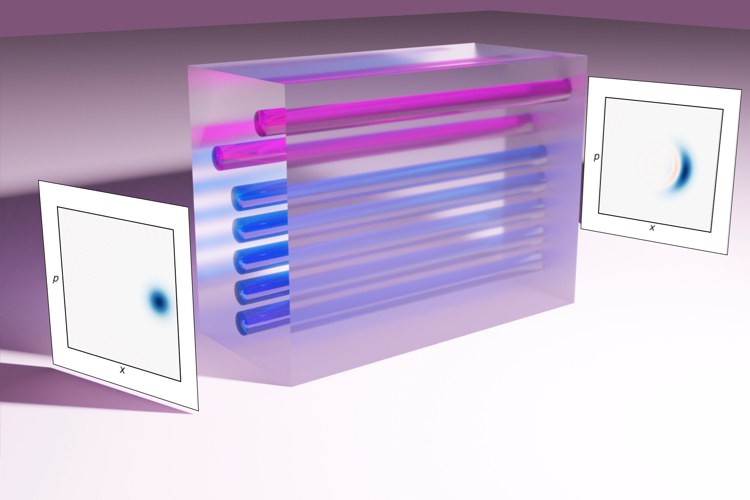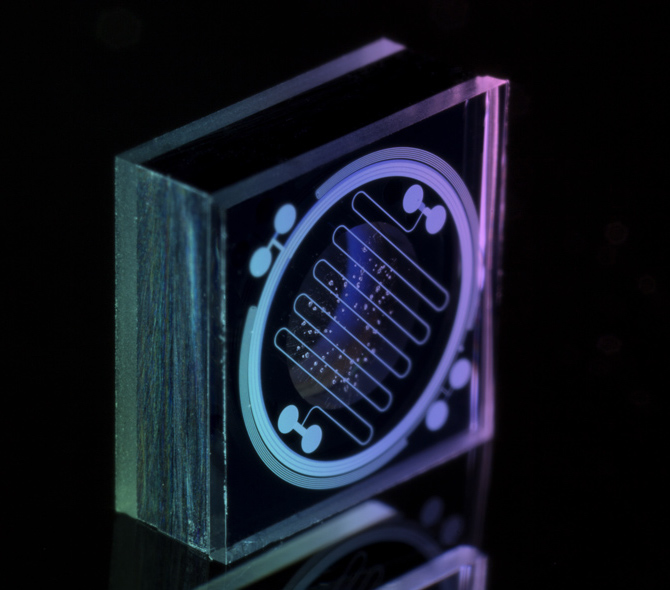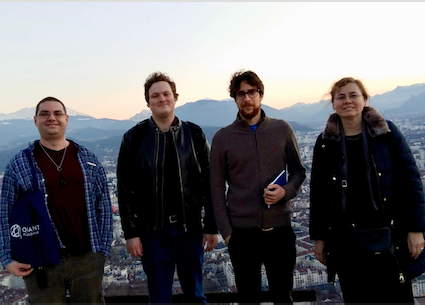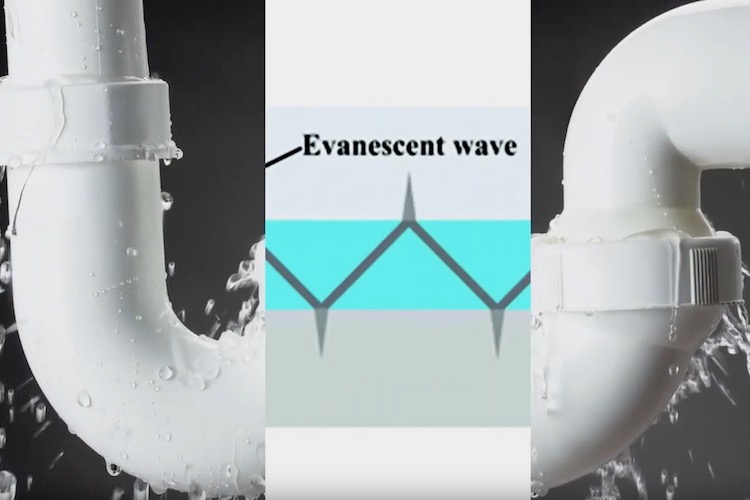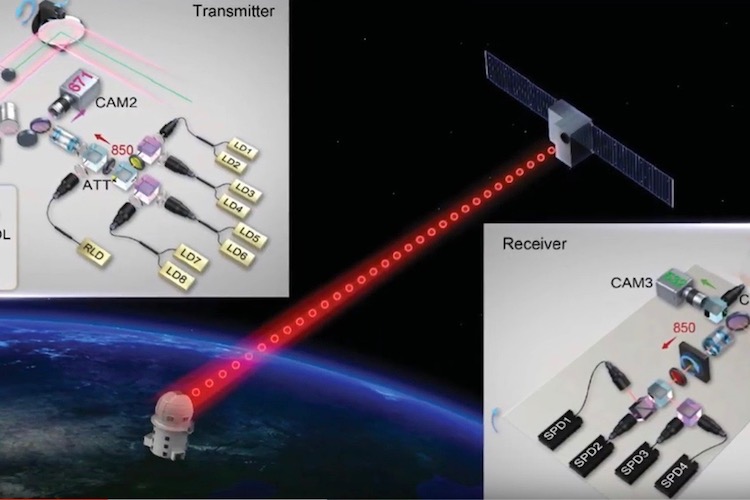-
In these videos produced for the general public we introduce the quantum technologies and the science behind our quantum source PhoG.
If you want to watch for 2 to 5 min at most: The first 4 videos are brief and introduce the specific aspects of Quantum Optics and Quantum Information in relation to the PhoG project.
If you are prepared to spend around 10 min: The fifth video covers all that is contained in the previous videos in a single coherent story about our project PhoG and the physics behind it.
This video is available in English
and in Russian.
-
PhoG device in an asymmetric configuration

Generation of strongly sub-Poissonian light from a coherent input using a waveguide network with engineered nonlinear loss. The two top (magenta) waveguides are the signal modes, that are coupled only through the reservoir, which is realised as an array of evanescently coupled waveguides (blue).
We refer to the linear arrangement of waveguides (blue) implementing a common bath as "tail". The waveguides are laser inscribed in a bulk glass with high third order nonlinearity.
Phase space insets show contours of the Wigner function of coherent states (left, input) and photon number squeezed states (right, output).
Controlling light with light – Tailored nonlinear photonics
University Paderborn

The Collaborative Research Center TRR142 from Paderborn University and TU Dortmund University introduces their research. How to design light with light? The research area of tailored nonlinear photonics wants to find answers to this question and thus better understand the properties of light. The researchers involved provide insights into their work.
-
PhoG: presentation of results at European Quantum Week 2020
Project PhoG gives an overview at mid-term on their project progress at the European Quantum Week, 2-6 November 2020, Berlin + online.
 Link to the video on YouTube.
Link to the video on YouTube.
Three examples of how Belarusian science is involved in solving shared European problems, bringing results also to their own country
With regard to the metrology activities (superresolution imaging), WP4 of the PhoG project directly profits from the expertise developed by IPNASB in Horizon 2020 project SUPERTWIN, 2016-2019. The goal of the projects is to develop the technology foundation for an advanced optical microscope imaging at the resolution beyond the Rayleigh limit, which is set by the photon wavelength. The role of IPNASB is to develop ways of diagnosing non-classical input states used to perform the imaging, and develop a description of the superradiant source of entangled photons. This research is closely connected with the task of IPNASB in PhoG.
For more information see the webpage of EU Neighbours.
 For one of the applications, super resolution imaging, PhoG is building on the expertise gained in a past EU-funded project SUPERTWIN. Two of the SUPERTWIN partners, IPNASB (theory) and CSEM (experiment), are members of our current consortium. For an illuminating video on use of quantum light in imaging see a promotional video from the SUPERTWIN project.
For one of the applications, super resolution imaging, PhoG is building on the expertise gained in a past EU-funded project SUPERTWIN. Two of the SUPERTWIN partners, IPNASB (theory) and CSEM (experiment), are members of our current consortium. For an illuminating video on use of quantum light in imaging see a promotional video from the SUPERTWIN project.
Technology: Fabrication of Integrated Quantum Devices
University Paderborn

The video on the "Fabrication of Integrated Quantum Devices" (at the bottom of the page the link goes to) takes you on a tour through the UPB clean rooms, where we fabricate our nonlinear waveguides. It all seems so simple: You place an order in our in-house procurement system, you wait a couple days and you get your sample delivered to your desk. Behind the scenes, however, there is a gazillion of individual processes and steps that all have to mesh like cogwheels in a machine. It takes experienced people to fabricate the best samples in the world. In the Integrated Quantum Optics group at UPB, we are lucky to have them!
5 November 2018 Press release published by the University of Paderborn: "EU-Initiative Quantum Flagship fördert Paderborner Forschung"
2 November 2018 Press release published by the University of St Andrews: "St Andrews-led project receives €2.6m boost"
-


